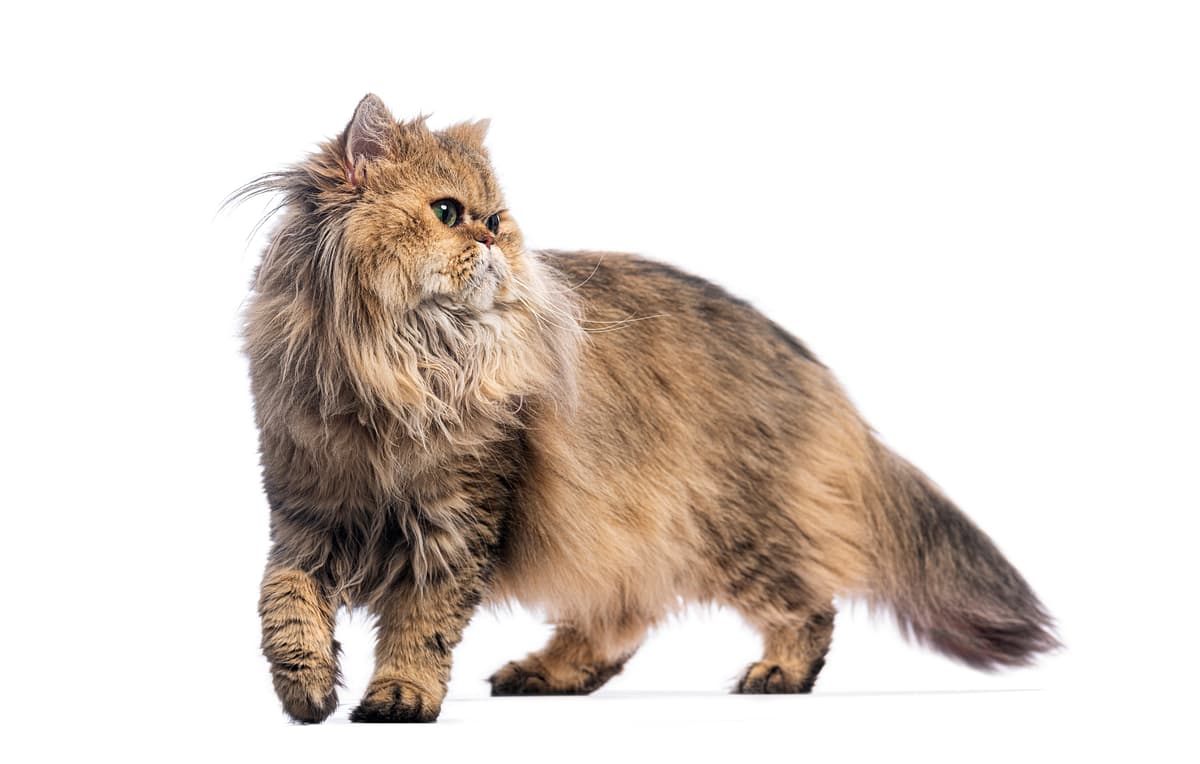Russian Blue vs Persian
Discover the differences between Russian Blue and Persian to make the best choice for your situation.
Try different breeds

Russian Blue
Graceful, intelligent, and quietly affectionate, this breed thrives in calm homes and forms deep bonds with its people. Soft blue-gray fur and vivid green eyes set them apart.

Persian
Luxurious long fur, expressive eyes, and a calm presence define this affectionate breed. Persian cats thrive as gentle companions, bringing quiet elegance to any home.
Quick comparison
Medium
3.5–5.0 kg
Shorthaired, plush double coat
12–16 years
2.5–4.0 kg
Moderately active
Medium
3.5–6.0 kg
Longhaired, dense undercoat
12–17 years
3.0–5.5 kg
Low activity needs
Personality & behavior
Compare the personality traits and behavioral characteristics of both breeds.
Russian Blue
Gentle with family, reserved with strangers
Quick learner, problem-solving ability is high
Moderate activity, enjoys daily play sessions
Likes interactive toys and gentle games
Adjusts well to calm, stable environments
Persian
Affectionate and gentle with family members
Learns routines but not highly problem-solving
Prefers lounging over being active
Enjoys quiet play, not very lively
Adjusts to change but prefers stability
Care needs
Exercise, grooming, and daily care requirements
Russian Blue
Progressive retinal atrophy, urinary tract issues
Persian
Polycystic kidney disease, respiratory issues
Suitability
How well each breed fits different living situations and families
Russian Blue
Easy to manage
Gentle temperament and low-maintenance grooming suit inexperienced owners well
Excellent choice
Quiet nature and moderate activity level suit smaller living spaces
Moderately suitable
Prefers calm environments and may not keep up with high activity levels
Needs supervision
Shy demeanor means careful introductions are needed with very young children
Usually compatible
Gets along with other pets if introduced properly and given time
Prone to loneliness
Russian Blues dislike extended solitude and can develop anxiety when left alone
Persian
Good choice
Their gentle temperament suits new owners but grooming needs require extra commitment
Excellent fit
Low activity level and quiet nature are well-suited for small living spaces
Not ideal
They prefer calm environments and may be stressed by frequent noise or activity
Generally suitable
Patient and tolerant, but supervision with very young children is recommended
Usually compatible
Can get along with other pets if properly introduced and socialized
Poor choice
Persians dislike being left alone and may develop stress or behavioral issues
Breed strengths
What each breed excels at and their best qualities
Russian Blue
- Affectionate with family members
- Low-shedding, hypoallergenic coat
- Intelligent and quick to learn
- Playful but not overly demanding
- Generally good health and longevity
Persian
- Gentle and calm temperament
- Affectionate with family members
- Adapts well to indoor living
- Low prey drive and minimal hunting
- Quiet and rarely vocalizes
Challenges & considerations
Potential challenges and considerations for each breed
Russian Blue
- Shy around strangers or guests
- Sensitive to changes in environment
- Needs regular mental stimulation
- Tends to gain weight easily
- Can become attached to one person
Persian
- Requires daily grooming and brushing
- Prone to respiratory health issues
- Sensitive to heat and humidity
- Regular eye cleaning often necessary
- Can be less playful than other breeds
Ready to choose your perfect breed?
Learn more about each breed or compare other breeds to find the perfect match for your lifestyle.
Discover more helpful tools
Make use of our other free tools to get the most out of your pet experience
